In PIX: Life and times of Colonel Muammar Gaddafi
Last updated on: October 21, 2011 08:47 IST
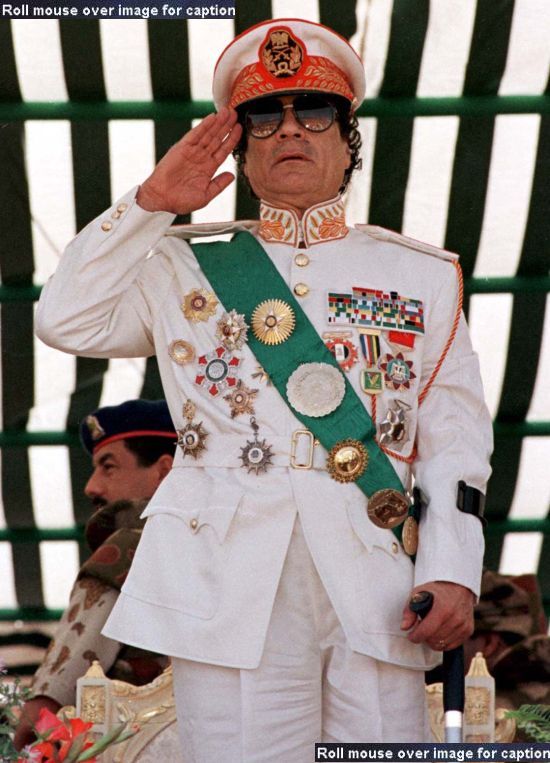 Colonel Muammar Gaddafi, a dictator who ruled Libya for 42 years, was on Thursday shot dead by rebels in his hometown of Sirte. The narcissistic leader backed terrorism and became United States public enemy number one. Libyan leader Muammar Gaddafi salutes his armed forces during a parade in Tripoli. Reuters Click on NEXT to see MORE photos... |
In PIX: Life and times of Colonel Muammar Gaddafi
Last updated on: October 21, 2011 08:47 IST
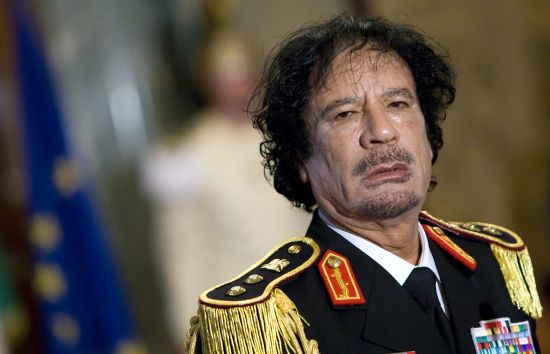 Gaddafi and some of his fellow officers were inspired by Egyptian President Gamal Abdel Nasser's brand of Arab nationalism. Gaddafi was only 27 when he became Libyan leader. He became Libya's autocratic ruler since 1969, when he seized power in a bloodless coup against King Idris of Libya. Gaddafi had decided to join the army because he wanted to overthrow the monarchy. He had received army training in the United Kingdom. Muammar Gaddafi at a news conference at the Quirinale palace in Rome in, 2009. Max Rossi/Reuters |
In PIX: Life and times of Colonel Muammar Gaddafi
Last updated on: October 21, 2011 08:47 IST
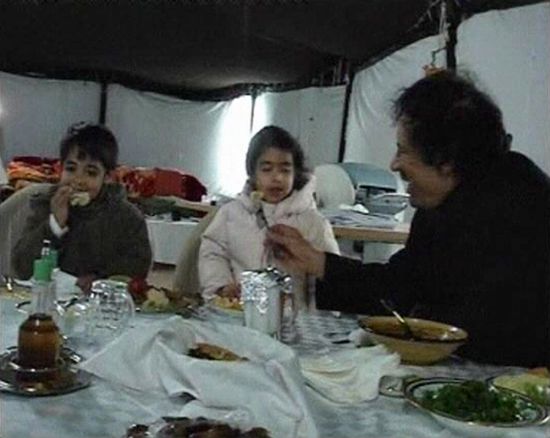 Colonel Muammar Gaddafi abolished the Libyan Constitution of 1951 and its civil liberties. Instead, Gaddafi imposed laws based on political ideology that he had formulated. He called it the Third International Theory and published in The Green Book. Muammar Gaddafi relaxes with his grandchildren in his tent at the Bab al-Aziziya compound in Tripoli in this still image taken from an exclusive amateur video Reuters TV |
In PIX: Life and times of Colonel Muammar Gaddafi
Last updated on: October 21, 2011 08:47 IST
 Colonel Muammar Gaddafi's personal bodyguard contingent was made up entirely of women. Called the "Amazonian Guards", these women were trained in martial arts and the use of firearms. Reports suggest, the condition for employment in the contingent was that the women remained virgins. Libyan leader Muammar Gaddafi walks down the stairs of his private airplane followed by his bodyguards at the Ciampino airport in Rome August 29, 2010. Tony Gentile/Reuters |
In PIX: Life and times of Colonel Muammar Gaddafi
Last updated on: October 21, 2011 08:47 IST
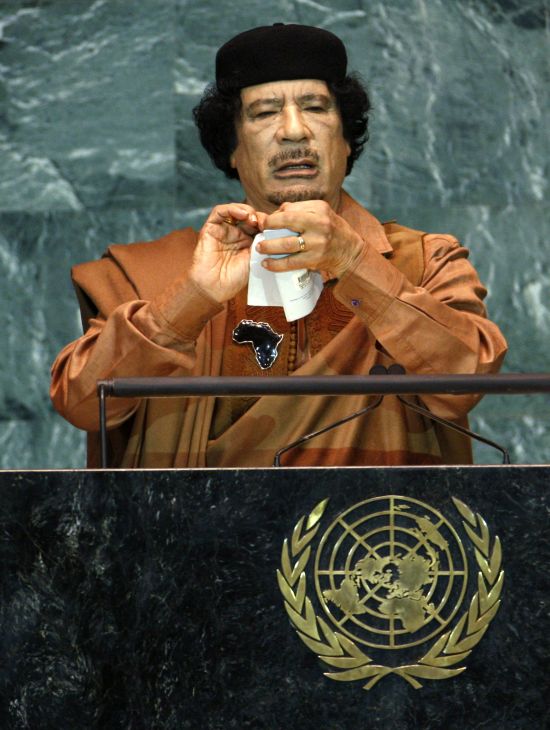 After being introduced in the United Nations General Assembly hall as the "leader of the revolution, the President of the African Union and the king of kings of Africa, Gaddafi shattered protocol by giving a rambling speech that stretched for 90 minutes instead of the allotted 15. Libyan leader Muammar Gaddafi pretends to rip a Charter of the United Nations and Statute of the International Court of Justice as he addresses the 64th United Nations General Assembly at the UN headquarters in New York Mike Segar/Reuters |
In PIX: Life and times of Colonel Muammar Gaddafi
Last updated on: October 21, 2011 08:47 IST
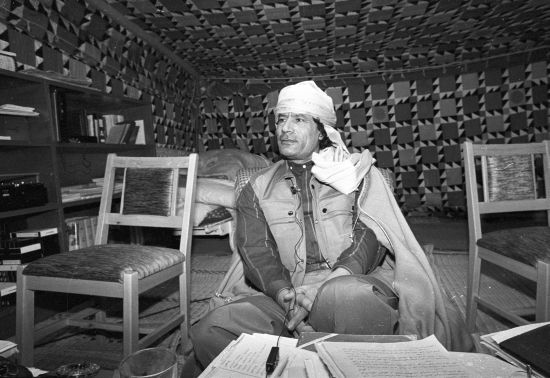 US President Ronald Reagan labeled Gaddafi a "mad dog" because of his proximity to militant groups like the Irish Republican Army and the Palestine Liberation Organisation Libyan leader Muammar Gaddafi inside his Bedouin tent during a news conference in 1986 where he presented his family to US women journalists. Reuters/Kate Dourian |
In PIX: Life and times of Colonel Muammar Gaddafi
Last updated on: October 21, 2011 08:47 IST
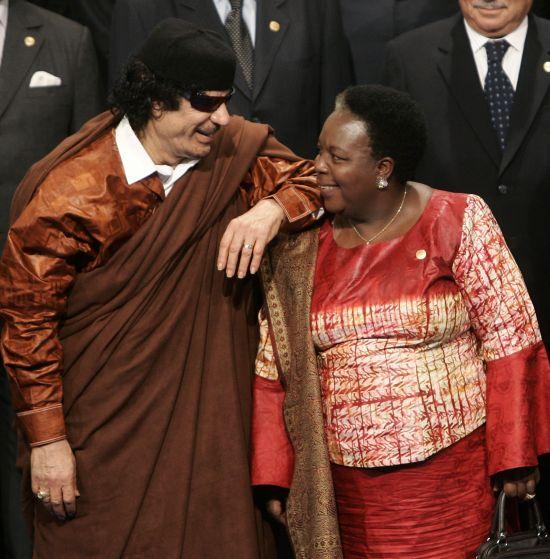 Gaddafi often wore bright coloured clothes, preferring safari suits and sunglasses. He is said to have been obsessed with appearing young and strong. Libyan leader Moummar Gaddafi talks with Pan African Parliament President Gertrude Mongella from Tanzania during the family photo of the EU-Africa summit in Lisbon. Andrea Comas/Reuters |
In PIX: Life and times of Colonel Muammar Gaddafi
Last updated on: October 21, 2011 08:47 IST
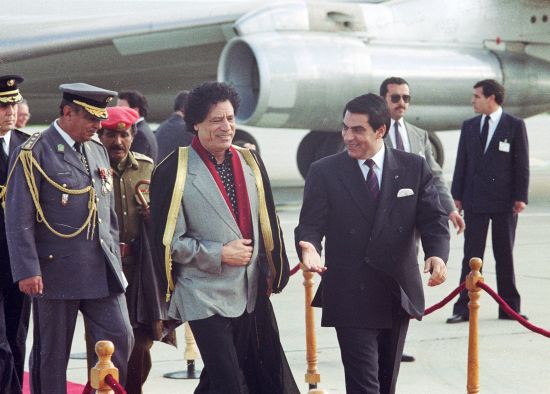 Col Gaddafi's Libya was accused of bombing a Pan Am plane over Lockerbie, Scotland. His links with militant groups was the reason the country suffered international isolation for many years. However, relations with the West bettered after Libya formally took responsibility for the Lockerbie bombing. Tunisian President Zine Al-Abdine Ben Ali (R) welcomes Libyan leader Muammar Gaddafi upon his arrival at Tunis airport January 10, 1990. Frederic Neema/Reuters |









